Solar eclipse of December 26, 2057
A total solar eclipse will occur on December 26, 2057. A solar eclipse occurs when the Moon passes between Earth and the Sun, thereby totally or partly obscuring the image of the Sun for a viewer on Earth. A total solar eclipse occurs when the Moon's apparent diameter is larger than the Sun's, blocking all direct sunlight, turning day into darkness. Totality occurs in a narrow path across Earth's surface, with the partial solar eclipse visible over a surrounding region thousands of kilometres wide.
| Solar eclipse of December 26, 2057 | |
|---|---|
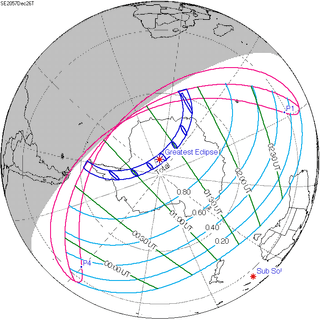 Map | |
| Type of eclipse | |
| Nature | Total |
| Gamma | -0.9405 |
| Magnitude | 1.0348 |
| Maximum eclipse | |
| Duration | 110 sec (1 m 50 s) |
| Coordinates | 84.9°S 21.8°E |
| Max. width of band | 355 km (221 mi) |
| Times (UTC) | |
| Greatest eclipse | 1:14:35 |
| References | |
| Saros | 152 (15 of 70) |
| Catalog # (SE5000) | 9636 |
Related eclipses
Solar eclipses 2054–2058
This eclipse is a member of a semester series. An eclipse in a semester series of solar eclipses repeats approximately every 177 days and 4 hours (a semester) at alternating nodes of the Moon's orbit.[1]
| Solar eclipse series sets from 2054-58 | ||||
|---|---|---|---|---|
| Ascending node | Descending node | |||
| Saros | Map | Saros | Map | |
| 117 | August 3, 2054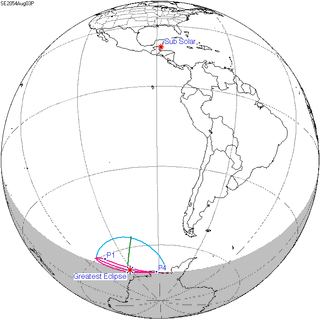 Partial |
122 | January 27, 2055 Partial | |
| 127 | July 24, 2055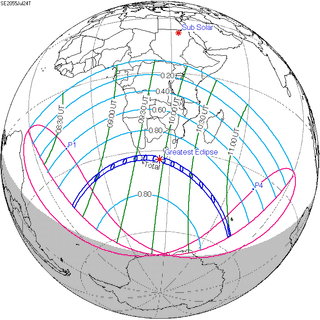 Total |
132 | January 16, 2056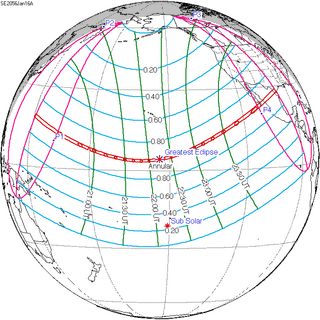 Annular | |
| 137 | July 12, 2056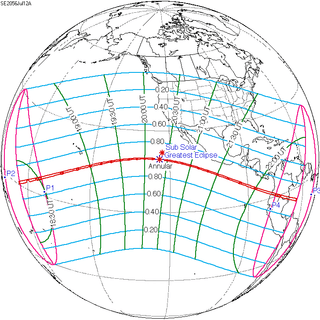 Annular |
142 | January 5, 2057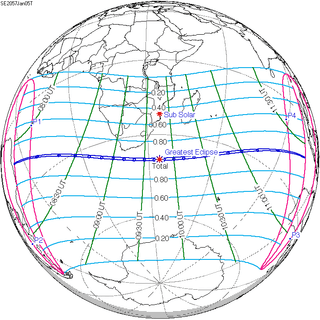 Total | |
| 147 | July 1, 2057 Annular |
152 | December 26, 2057 Total | |
| 157 | June 21, 2058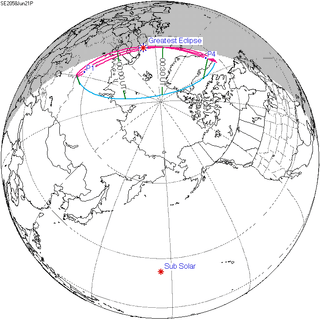 Partial | |||
Saros 152
Solar saros 152, repeating every about 18 years and 11 days, contains 70 events. The series started with a partial solar eclipse on July 26, 1805. It has total eclipses from November 2, 1967, to September 14, 2490; hybrid eclipses from September 26, 2508, to October 17, 2544; and annular eclipses from October 29, 2562, to June 16, 2941. The series ends at member 70 as a partial eclipse on August 20, 3049. The longest total eclipse will occur on June 9, 2328, at 5 minutes and 15 seconds; the longest annular eclipse will occur on February 16, 2743, at 5 minutes and 20 seconds.[2]
| Series members 7–17 occur between 1901 and 2100: | ||
|---|---|---|
| 7 | 8 | 9 |
 September 30, 1913 |
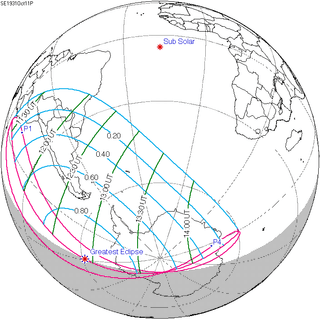 October 11, 1931 |
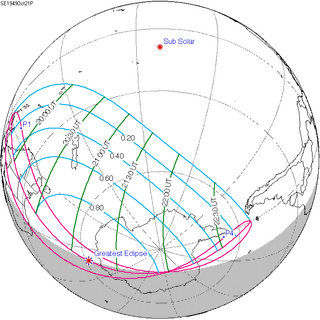 October 21, 1949 |
| 10 | 11 | 12 |
 November 2, 1967 |
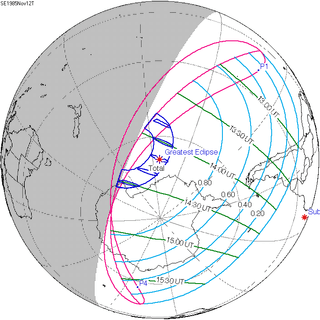 November 12, 1985 |
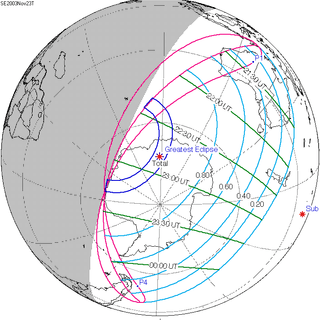 November 23, 2003 |
| 13 | 14 | 15 |
 December 4, 2021 |
 December 15, 2039 |
 December 26, 2057 |
| 16 | 17 | |
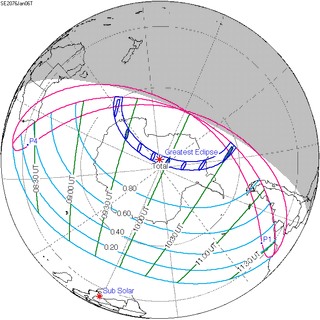 January 6, 2076 |
 January 16, 2094 | |
Tritos series
This eclipse is a part of a tritos cycle, repeating at alternating nodes every 135 synodic months (≈ 3986.63 days, or 11 years minus 1 month). Their appearance and longitude are irregular due to a lack of synchronization with the anomalistic month (period of perigee), but groupings of 3 tritos cycles (≈ 33 years minus 3 months) come close (≈ 434.044 anomalistic months), so eclipses are similar in these groupings.
| Series members between 1901 and 2100 | |||
|---|---|---|---|
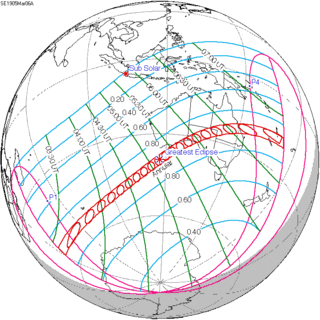 March 6, 1905 (Saros 138) |
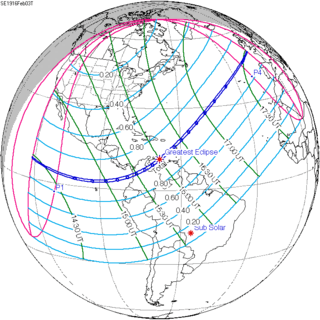 February 3, 1916 (Saros 139) |
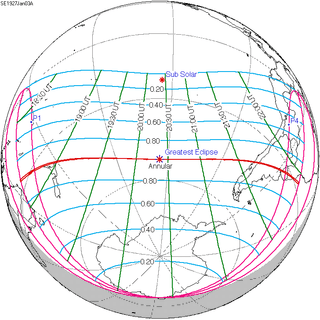 January 3, 1927 (Saros 140) | |
 December 2, 1937 (Saros 141) |
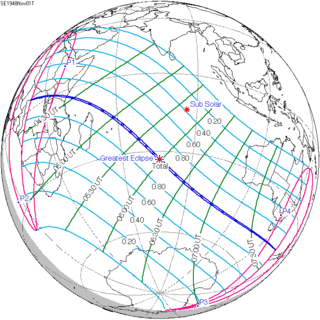 November 1, 1948 (Saros 142) |
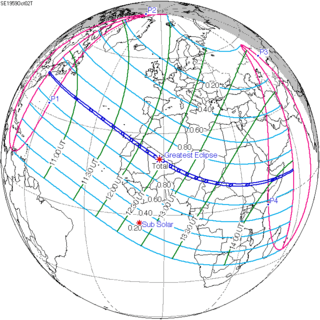 October 2, 1959 (Saros 143) | |
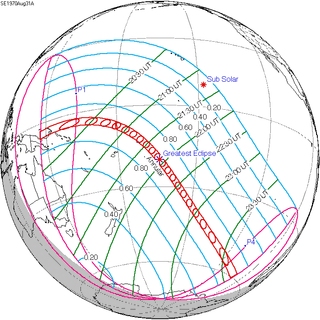 August 31, 1970 (Saros 144) |
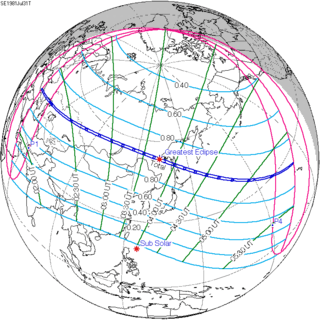 July 31, 1981 (Saros 145) |
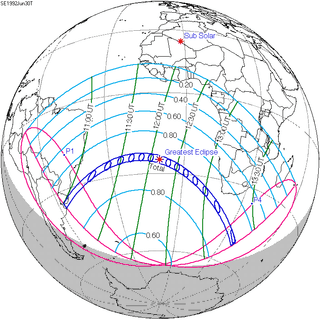 June 30, 1992 (Saros 146) | |
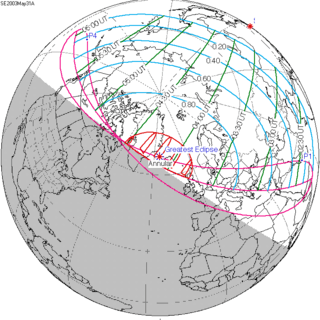 May 31, 2003 (Saros 147) |
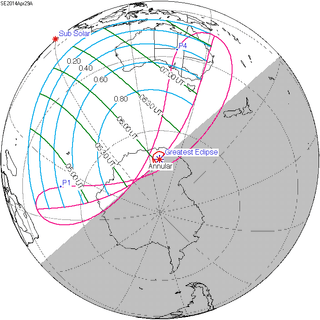 April 29, 2014 (Saros 148) |
 March 29, 2025 (Saros 149) | |
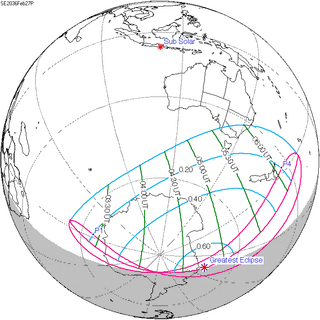 February 27, 2036 (Saros 150) |
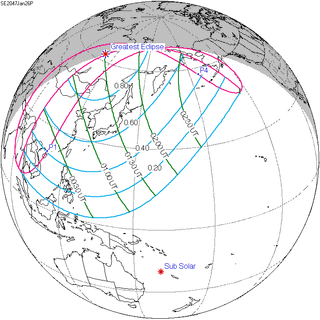 January 26, 2047 (Saros 151) |
 December 26, 2057 (Saros 152) | |
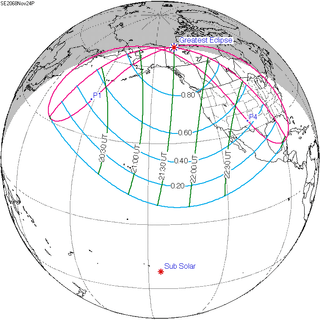 November 24, 2068 (Saros 153) |
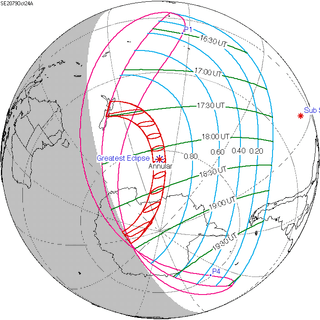 October 24, 2079 (Saros 154) |
 September 23, 2090 (Saros 155) |
|
Metonic series
The metonic series repeats eclipses every 19 years (6939.69 days), lasting about 5 cycles. Eclipses occur in nearly the same calendar date. In addition, the octon subseries repeats 1/5 of that or every 3.8 years (1387.94 days). All eclipses in this table occur at the Moon's descending node.[3]
| Octon series with 21 events between May 21, 1993 and August 2, 2065 | ||||
|---|---|---|---|---|
| May 20–21 | March 8–9 | December 25–26 | October 13–14 | August 1–2 |
| 98 | 100 | 102 | 104 | 106 |
| May 21, 1955 | March 9, 1959 | December 26, 1962 | October 14, 1966 | August 2, 1970 |
| 108 | 110 | 112 | 114 | 116 |
| May 21, 1974 | March 9, 1978 | December 26, 1981 | October 14, 1985 | August 1, 1989 |
| 118 | 120 | 122 | 124 | 126 |
 May 21, 1993 |
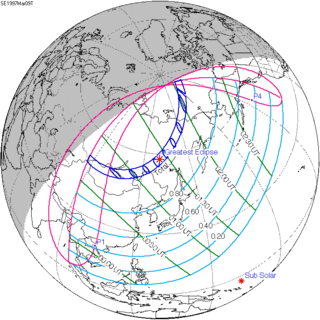 March 9, 1997 |
 December 25, 2000 |
 October 14, 2004 |
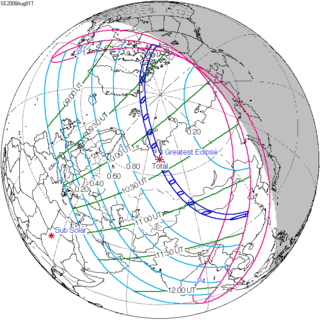 August 1, 2008 |
| 128 | 130 | 132 | 134 | 136 |
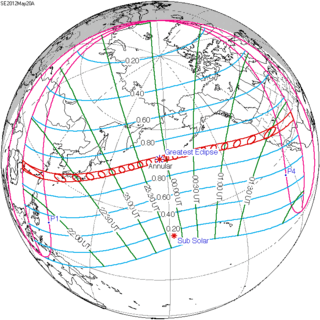 May 20, 2012 |
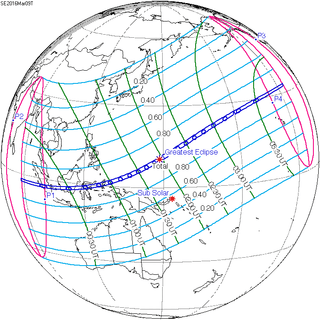 March 9, 2016 |
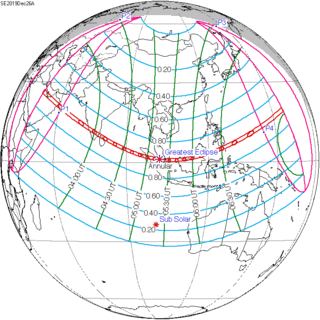 December 26, 2019 |
 October 14, 2023 |
 August 2, 2027 |
| 138 | 140 | 142 | 144 | 146 |
 May 21, 2031 |
 March 9, 2035 |
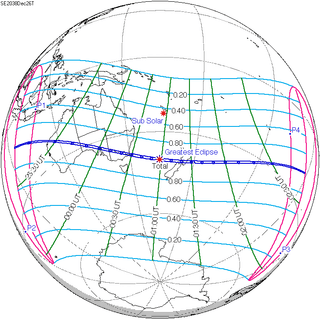 December 26, 2038 |
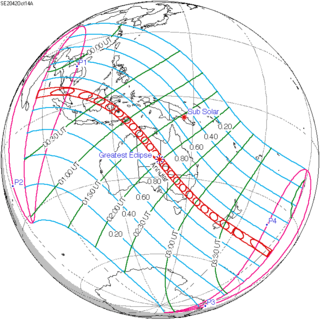 October 14, 2042 |
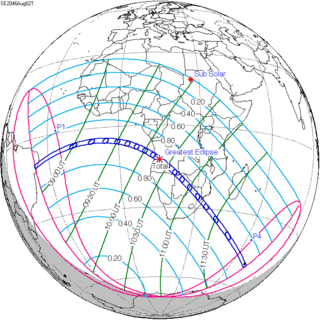 August 2, 2046 |
| 148 | 150 | 152 | 154 | 156 |
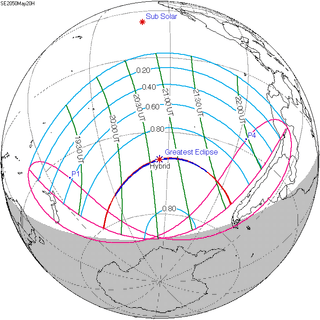 May 20, 2050 |
 March 9, 2054 |
 December 26, 2057 |
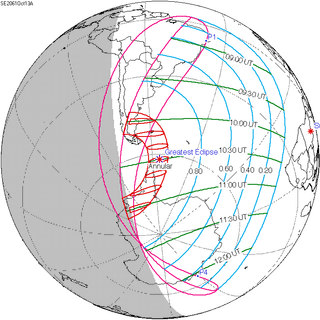 October 13, 2061 |
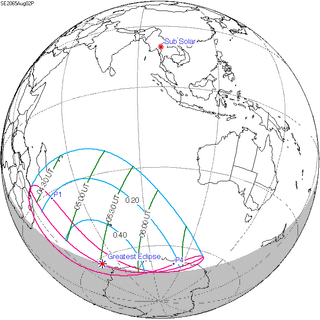 August 2, 2065 |
| 158 | 160 | 162 | 164 | 166 |
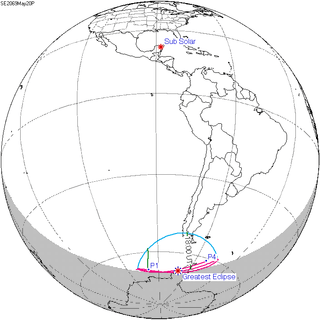 May 20, 2069 |
March 8, 2073 | December 26, 2076 | October 13, 2080 | August 1, 2084 |
References
- van Gent, R.H. "Solar- and Lunar-Eclipse Predictions from Antiquity to the Present". A Catalogue of Eclipse Cycles. Utrecht University. Retrieved 6 October 2018.
- Saros Series Catalog of Solar Eclipses NASA Eclipse Web Site.
- Freeth, Tony. "Note S1: Eclipses & Predictions". plos.org. Retrieved 6 October 2018.
.jpg)
